If you are not so great with colors, you may confuse brown cow breeds with red ones. Obviously, this may end up being an issue if what you truly need for your farm are brown cows.
Not to worry, if you need brown cows for your farm, we have compiled a list of some breeds you should consider. We discuss their origins, physical traits, uses, and other peculiarities in the rest of this article.
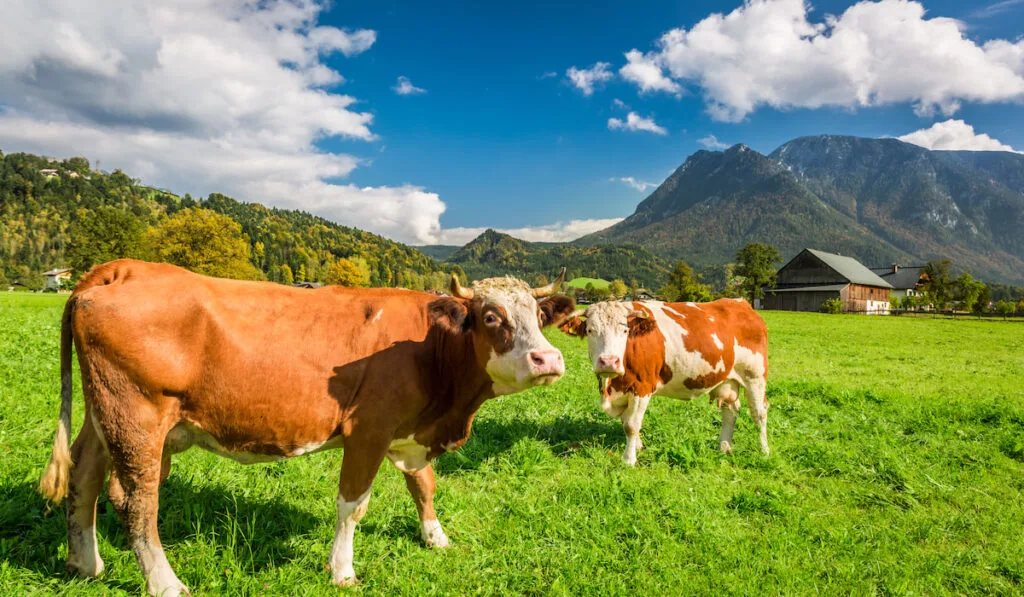
Table of Contents
Brown Swiss Cattle
The Brown Swiss Cattle is an American breed, not a Swiss breed, as the name suggests. It originated from a Swiss breed, the Braunvieh Cattle, hence the name.
The Brown Swiss Cattle may also be called the American Brown Swiss. While it derived from the Braunvieh Cattle, it has deviated substantially from that breed.
If you desire dairy cattle, the Brown Swiss is one breed you should consider. Members of this breed are primarily raised for milk production. Unsurprisingly, their milk is of top quality, and it is also unique.
The cream in milk from Brown Swiss cows rises slowly relative to most other cattle milk. And this phenomenon is attributed to its smaller fat globules and longer fatty acid chains.
Beyond that, Brown Swiss milk contains just the perfect protein to fat ratio for cheese making. So, if getting milk for cheese is vital to you, you should consider this breed.
Brown Swiss Cattle are medium- to large-sized animals. On average, the cows weigh 1300-1410 pounds. As expected, the bulls are heavier as they weigh almost 2000 pounds when mature. The calves weigh just about 88 pounds at birth.
The coat of Brown Swiss Cattle is typically light brown. But they may have some dark brown, grey, or off-white variations.
Thanks to their high level of adaptability to various climates, you can find Brown Swiss Cattle worldwide.
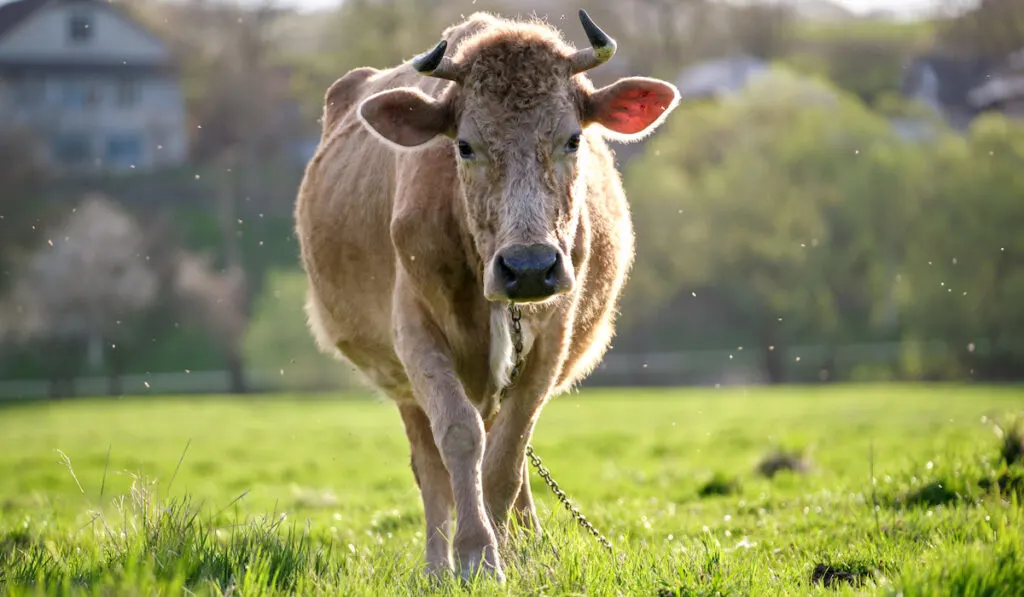
Braunvieh
As mentioned earlier, the ancestry of the Brown Swiss Cattle is linked to the Braunvieh Cattle. But while the Brown Swiss is American, the Braunvieh is Swiss.
Braunvieh Cattle originated from Grey-Brown Mountain Cattle bred in medieval times. The first records about them are dated around the last quarter of the 18th century. Then almost 100 years later, they were exported to the US for the first time.
Unlike the Brown Swiss, the Braunvieh Cattle are primarily raised for their beef. But they may also be used for milk production and as draft animals. This earned them the triple-purpose breed tag. These days, the principal use of Braunvieh Cattle depends on the region; it could be any of the above.
If you want Braunvieh Cattle for dairy, then you will get your money’s worth. On average, they produce around 15800-26500 pounds of milk per lactation. Productivity appears to vary amongst cows from different locations. But all in all, it should fall within the stated range.
Besides being prolific milk producers, Braunvieh cows offer high-quality. Their milk contains around 3.5-4.5% of protein.
Braunvieh Cattle are a medium-sized breed. The bulls typically weigh 2200-2900 pounds at maturity. The cows, on the other hand, weigh around 1200-1700 pounds. Both cows and bulls are horned, and their coat is typically uniform grey-brown or brown.
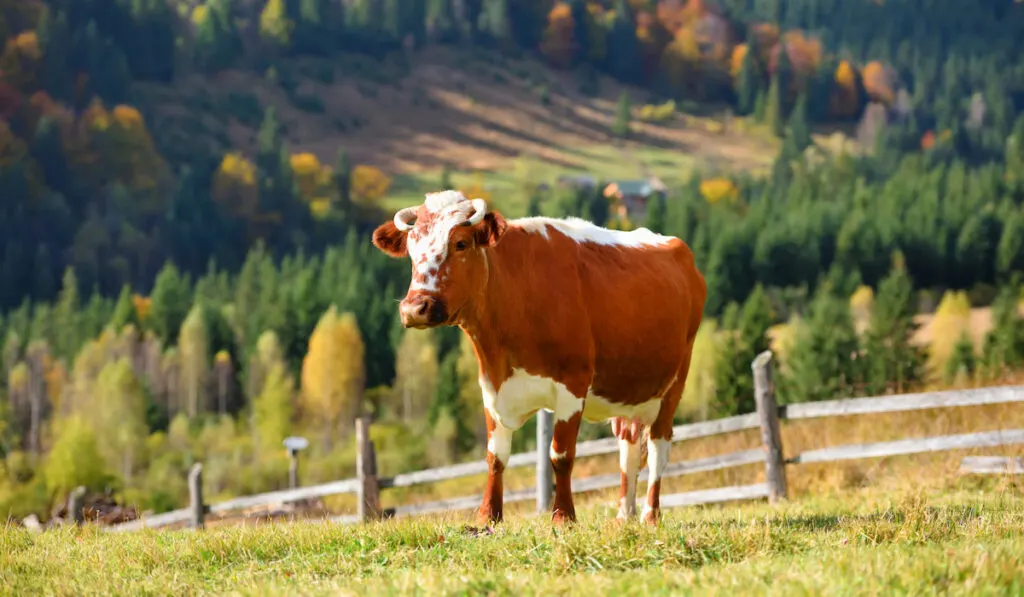
Brown Carpathian Cattle
The Brown Carpathian Cattle is a Ukrainian breed indigenous to Zakarpattia Oblast. It originated from two ancient cattle breeds: Ryzhka and Mokan.
There are two distinguished inbreeds of the Brown Carpathian Cattle: Lowland Type and Mountain Type. The Mountain Brown Carpathian Cattle has a denser physique and sturdy, ungulate horns. They are also well-adapted to mountains and foothills.
The physique of the Lowland Brown Carpathian Cattle is not as dense as that of the mountain type, but their skeleton is sturdier. They are also taller and more suited for lowlands and valleys.
The Brown Carpathian Cattle is a dual-purpose breed; it may be kept for dairy purposes and beef. The lowland type produces relatively more milk: around 6600-8800 pounds per lactation.
The mountain type gives off around 4850-7700 pounds of milk per lactation. But both types have a similar meat yield: about 55-58%.
The Lowland Brown Carpathian weighs around 990-1200 pounds when mature. But the mountain types are lighter, weighing about 880-990 pounds at maturity.
Brown Carpathian Cattle are brown with a red tinge. They are pretty hardy and are particularly resistant to caisson disease – one of the limited cattle groups unaffected by the disease.
While the Brown Carpathian Cattle is one hardy breed, they are currently threatened by unlimited crossings. These crossings have led to the formation of animals with weaker limbs and lower milk yield.
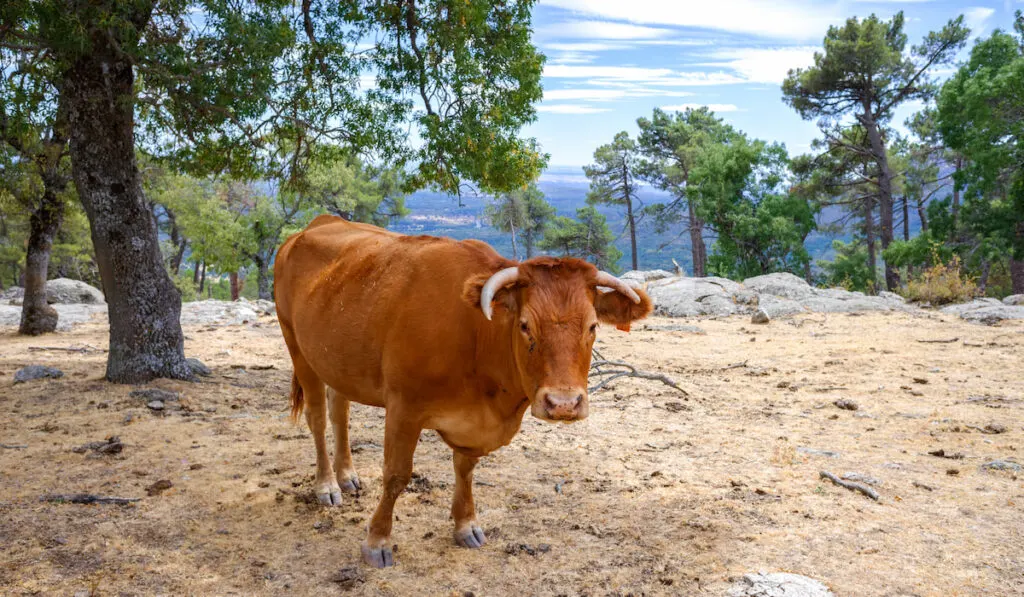
Alentejana Cattle
Alentejana Cattle is a Portuguese breed that was historically important in the hills of Alentejo. Its name was derived from the name of the said hill.
Members of this breed are primarily raised for meat and as draft animals. Alentejana Cattle have solid limbs, so it is no surprise they were used as draft animals. But these days, they are rarely used for such purposes.
The coat of Alentejana Cattle is mahogany brown or blonde. They can be solid-colored or pied. Alentejana Cattle have broad heads and chests.
Alentejana Cattle are medium-sized to large. The bulls weigh around 2000-2500 pounds when mature. The cows weigh 1300-1500 pounds at maturity. While the cows can reach up to 48.5 inches at the withers, the bulls grow as tall as 52.8 inches.

Arouquesa
Like the Alentejana Cattle, Arouquesa has Portuguese origin. They are also a dual-purpose breed like the Alentejana Cattle.
Arouquesa can be raised for meat and milk. But beyond these uses, they can also act as draft animals. The Arouquesa is currently considered to be the best native beef producer in Portugal. That being said, their milk is also of outstanding quality.
This breed is generally small-sized. The weight of a mature cow is around 770-880 pounds. A mature bull would weigh about 790-950 pounds. Mature Arouquesa cows grow as tall as 45.8 inches, while the bulls reach around 52.8 inches.
Both cows and bulls of the Arouquesa breed are horned. The color of their coat is primarily light brown. But sometimes, the bulls may be slightly darker than the cows.
Betizu
The Betizu originated from the Basque Country, Spain, where it represents the ancient Aurochs Bull. The name of this breed, Betizu, translates to evasive cow. It explains the semi-wild nature of members of this breed; they have owners, but they typically roam into mountain pastures.
Betizu Cattle are principally used for vegetation control these days; many breeders look to other breeds for their milk.
The coat of Betizu cows is wheat-colored to reddish-brown. On average, members of this breed are small-sized, with the females weighing around 770 pounds and males 880-1100 pounds.
Both the cows and the bulls of the Betizu breed are horned. The horns show up when they are young, and they grow into a half-moon shape. However, the horns of the bulls are broader than those of the cows.
Barrosa Cattle
The Barrosa Cattle is the third Portuguese breed on our list. It is typically found in the highest lands of northern Portugal, its ancestral range.
Barrosa Cattle are bred for meat and milk, and the beef from them is of particular interest. Barrosa Cattle meat is pretty tasty and healthy. These features are, in part, due to their diet and genetic material.
Beef from Barrosa Cattle is noted for having an ideal combination of omega-3 and omega-6. The said unsaturated fatty acids, alongside low cholesterol levels, make their meat relatively healthy. Beef from Barrosa Cattle also contains some antioxidants and micronutrients.
Barrosa Cattle are noted for their large, unique horns. The fact that their horns can grow as long as 39 inches is pretty amazing.
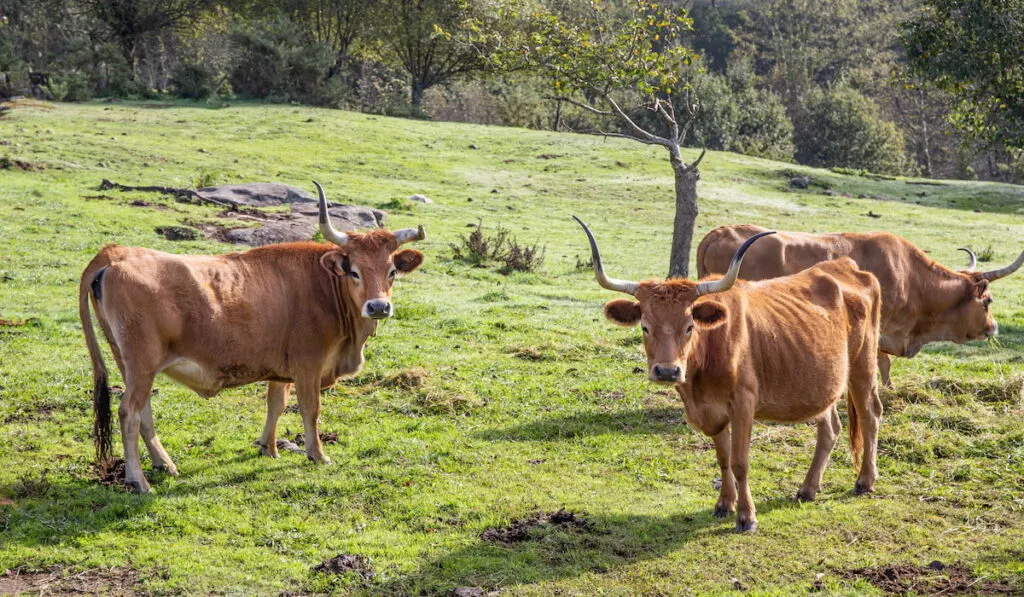
Cachena
The Cachena also has Portuguese origins. It is pretty close to Barrosa, but it is relatively tinier. In fact, the two breeds are so similar some people consider them to be variants.
The Cachena Cattle have their ancestry linked to the local brown and yellow cattle breed of northern Portugal.
Cachena Cattle were initially triple-purpose: they were kept for meat, milk, and as draft animals. But these days, they are principally raised for meat. Although, they are still sometimes bred for milk.
Cachena Cattle are not one of the biggest-sized breeds. On average, the cows weigh 860 pounds when fully grown, and the bulls weigh about 1200 pounds. Both cows and bulls never develop taller than 43 inches.
The coat of Cachena Cattle is typically light brown or yellow. But you may find some dark brown spots in the wither areas.
Japanese Brown
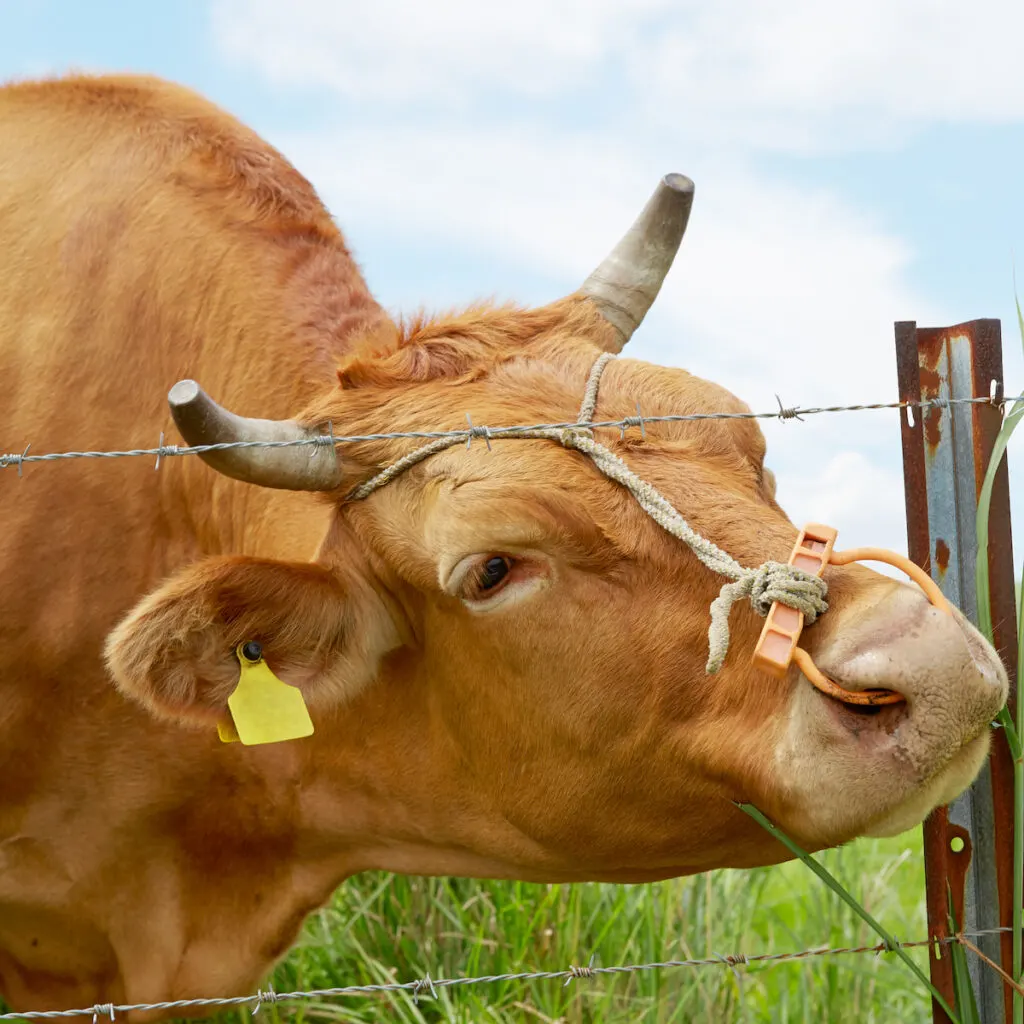
The Japanese Brown Cattle also goes by the name Akaushi, which is Japanese for Red Cattle. It is one of 4 breeds belonging to the Wagyu group.
Of course, the Japanese Brown Cattle originated from Japan. Like other Wagyu, it derived from crossing native Japanese breeds and imported breeds (Swiss Simmental and Korean Hanwoo) in the early 1900s.
Japanese Brown Cattle are primarily found in 2 prefectures: Kochi and Kumamoto.
Of both prefectures, the Kumamoto line is more common, and it has a higher population. The Kochi line has a lower population, and it is limited to Japan.
Kumamoto Japanese Brown Cattle have light brown coats. The Kuchi Japanese Brown Cattle, on the other hand, have reddish-brown coats.
For a long time, the Japanese Brown Cattle were mainly used as draft animals. But these days, they are bred for meat.
Japanese Brown Cattle are prized for their low-fat content – around 12% or less. So, if you want lean meat, consider this breed.
Of course, since the beef from Japanese Brown Cattle is predominantly lean, it is firm and tasty.
Resources
- https://www.roysfarm.com/brown-swiss-cattle/
- https://www.roysfarm.com/braunvieh-cattle/
- https://www.fondazioneslowfood.com/en/ark-of-taste-slow-food/brown-carpathian-cattle/
- https://www.farmow.com/breed/alentejana-cattle
- https://www.roysfarm.com/arouquesa-cattle/
- https://beautiful-basque-country.tumblr.com/post/174940236467/meet-betizu-cows-a-very-ancient-autochtonous
- https://www.fondazioneslowfood.com/en/ark-of-taste-slow-food/betizu-2/
- https://www.fondazioneslowfood.com/en/ark-of-taste-slow-food/barrosa-cattle/
- http://dad.fao.org/cgi-bin/EfabisWeb
- https://wagyu.org/breed-info/
- https://www.roysfarm.com/cachena-cattle/
